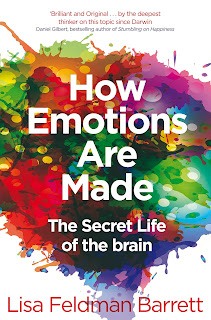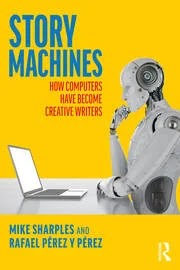Barbara Kellerman is a Professor at Harvard’s Kennedy School of Government. Long a critic of most approaches to leadership theory and training, she focuses rather on what leadership is not, with more of a focus on what she calls ‘followership’. She has written many books on the topic, from
Bad Leadership (2004) to The End of Leadership (2012), has won many awards and is an accomplished and prolific, international speaker.
History of leadership
Critical of the recent 40 year focus on leadership, she is critical of those who ignore the history of leadership, from Plato onwards. She points to his view that someone should only become a leader at 50 or above, as lived experience is often critical. Calling on Machiavelli, Locke, Hobbes, Montesquieu, Marx and others, she is surprised that this rich set of reflective views from history are ignored in modern leadership scholarship. In particular, she is critical of the ideas that leaders in themselves are critical, the ‘Great Man (usually)’ theories of leadership that focus on qualities and traits, as if there was an essence of leadership that can be distilled and used as a potion or remedy. Hitler, she claims, did not kill 6 million Jews in the Holocaust. In fact, he killed not a single Jew, so reading history just in terms of biographies is a mistake.
For Kellerman, the Pollyanna world of leadership literature and training is unreal. Power, authority and influence are real. Leaders pay themselves more and more, are glad to reduce costs and numbers of employees, shift to cheaper manufacturing and services abroad. Often referring to Putin, Xi Jinping, Erdogan and Trump as examples of leadership as the exercise of power. Never have we had so much attention, books, money spent and training on leadership – and so little of it. We must therefore look, like good historians, at context.
Leadership industry
She sees the ‘Leadership industry’ as a 40 year aberration, an industry that has dominated management training, to its detriment. In general, she is dissatisfied with the fixation on leadership and the focus on traits of leaders and leadership. Look around, she asks, and see if leadership has improved after 40 years of this focus on leadership and leadership training? The scholarly evidence for success is scant. Leadership, she thinks, needs to be seen as a system not a person, which is why she is sceptical about the leadership industry and its Pollyanna recommendations. It has become a money making proposition, a leadership-industrial complex. But it is complex in another sense, in that it cannot be taught easily and quickly.
Leadership ‘attribution error’
Critical of the leadership industry, countless courses, centres, workshops, books and rhetoric devoted to Leadership, she puts most of it down to an ‘attribution error’; the tendency to attributes all success and failures to leaders and leadership. This, she regards as a basic and naïve mistake but one that drives untold amounts of unnecessary spend in organisations on consultancy and training.
In fact, most of the sophisticated political developments have been about the devolution of power away from leaders to others. From the end of the 20th C into the 21st C this has continued with the devolution of power. Cultural change and therefore context, have rendered leaders less important.
Most of the books and research focus on good on traits for leaders and fail to focus on bad leadership. She proposes seven types of bad leader in Bad Leadership (2004):
1. Ineffective
2. Rigid
3. Intemperate
4. Insular
5. Corrupt
6. Callous
7. Evil
What we have to recognise is that things are often volatile, uncertain, complex, ambiguous, globalised and driven by technological change. These contexts are complex, so rather than focus on traits, look at the complexity of context as it is plural, proximate, distal and temporal. This is not about you, it is about change.
Followers
We have become fixated and obsessed by leaders at the expense of followers and the common good. As we overestimate the power of leader, where we think lies power, authority and influence lies, we correspondingly underestimate the power and influence of followers. Yet there is no leader without a follower, leaders do not exist without followers. The focus is therefore on the wrong end of the problem. We have too many leaders, which is the cult of individualism not community, when what really matters is to be realistic about followers, again a complex issue, which she classifies into:
Isolates
Bystanders
Participants
Activists
Diehards
Leadership and followership are intertwined. In understanding the idea and varieties of followership, one therefore understands leadership. The idea that everyone is a leader is, for her, ridiculous, as they are in practice, mostly various types of follower. The Western trajectory, since the Enlightenment, has seen power and influence wane and become increasingly devolved, so we have a very different context, one where followership is dominant.
Influence
Interest in Kellerman’s ideas have grown in the light of recent political events, especially in the US. She saw a turning point with Nixon and Monica Lewinsky in 1998, which degraded attitudes towards leadership. Will we continue with these more recent political divides? Avoid the regression to autocracy? We are seeing serious cleavages in countries, as followers have had enough of their leaders, now seen as the elite and out of touch. We have seen this in the US, France, UK and many other countries. A big mistake in business schools is to see that leadership courses focus on the organisation not the common good. We need to move away from this fixation on leadership.
Conclusion
It is unfortunate that serious scholars, such as Kellerman and Pfeffer, are often ignored by scholars, consultants and trainers in leadership, as they offer a more sophisticated interpretation of the complexity of the issues, rather than the delivery of simple platitudes.
Along with Pfeffer at Stanford, Kellerman provides a refreshing and more sophisticated theory of leadership and followership that escapes the normal focus on traits. Leaders are much more weakly positioned than they used to be. Influence matters more. Hierarchies are more horizontal.
Bibliography
Kellerman, B., 2012. The End of Leadership. New York, NY: Harper Business.
Kellerman, B., 2008. How followers are creating change and changing leaders. Boston, MA: Harvard Business School.
Kellerman, B., 2004. Bad leadership: What it is, how it happens, why it matters. Harvard Business Press.
Kellerman, B., 1999. Reinventing leadership: Making the connection between politics and business. SUNY Press.
Kellerman, B., 1984. The political presidency: Practice of leadership. Oxford University Press, USA.


_(1592-1670)._Tsjechisch_humanist_en_pedagoog._Als_voorganger_van_de_Moravische_of_Boheemse_Broedergemeente_verdreven_en_sedert_1656_gevestigd_te_Amsterdam_Rijksmuseum_SK-A-2161.jpeg)

